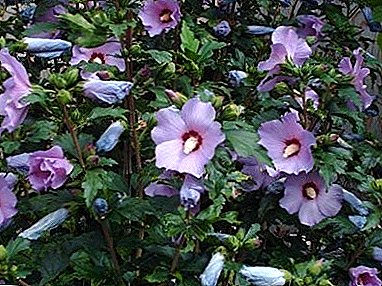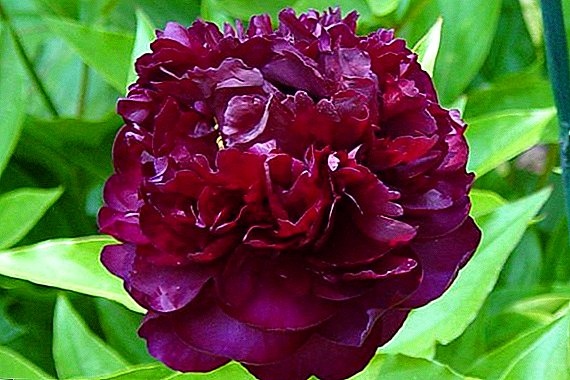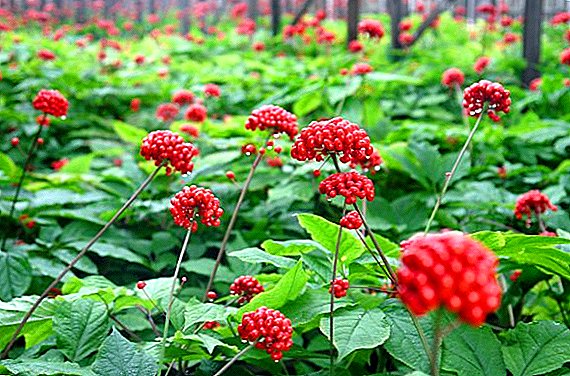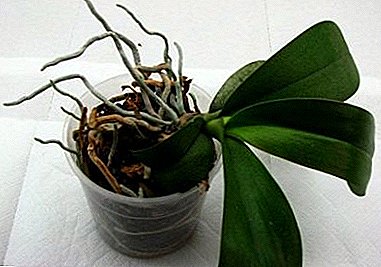
Often, buying an orchid already in bloom and enjoying its flowering, flower growers forget to clarify the details of the flowering cycle of their plant, and then panic when they cannot wait for beautiful flowers. To avoid this, you should briefly examine your darling.
Each plant has a rest period when it needs rest. In such cases, the worries are not at all necessary and you just have to wait a bit. However, there are times when the orchid needs help in order for the flowering period to recover.
The life cycle of a healthy plant
If a healthy-looking orchid does not bloom, you should pay attention to the conditions of detention.Because this is the main indicator of what happens to your flower.
When is there a cause for concern?
 Usually in the flower shop buy flowering specimens.
Usually in the flower shop buy flowering specimens.
In this case, they will throw flowers in a couple of weeks or months. When will they bloom again and why is this not happening for a long time? If adult orchids at home do not pick up color in 1-1.5 years, then there is definitely cause for concern.
This time is enough for the adaptation period to end, and if the tsathok does not release the arrow, then something goes wrong in life activity plants.
How long is the rest period normal?
However, if the flower has undergone "stress" in the form of transplanting or combating parasites, then the buds can make you wait more than six months, or even a year. On average, an orchid can be in a state of sleep from 3 to 6 months.
Possible problems
Not growing
If the orchid seemed to freeze, then it means that her everyday life has become boring., all activity has gone to no. So you need to cheer her up with the help of stress, which will resume all stopped processes in the plant.
Only roots develop
To establish the reason for the lack of flowering, you must know the basic rules of care and the external signs of a healthy orchid.
Normally growing tips of the roots of a bright light green color. If they are not visible for several months, you need to reconsider the care of the plant. For regular flowering orchids need:
- large amounts of ambient light;
- during the autumn-winter period, the light day is extended to 12 hours using a special fitolamp.
Insufficient duration of illumination in winter is the main factor due to which indoor orchid does not form a peduncle.
Releases new leaves, but no buds
Why do your orchids grow young leaves, but it blooms badly at home? Irregular watering is the main reason why orchids do not bloomand only leaves grow. Few, buying a shopkeeper in a store, bother to read the information about the care. Tropics means wet. And every day a large amount of liquid is poured into the pot. This is the reason why the plant does not receive adequate nutrition and eventually does not live in its cycle.
Why is there no bloom in a residential environment?
The appearance of a plant can tell a lot about its health:
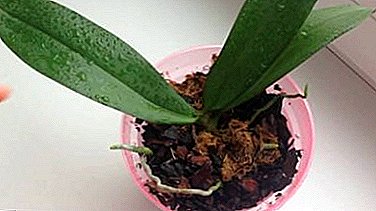 orchid roots - normally dense, silvery-gray, when moistened, acquire a light green color;
orchid roots - normally dense, silvery-gray, when moistened, acquire a light green color;- young roots have a bright green color, old - muffled;
- leaves a healthy plant is dense, green, with a shiny skin without signs of wrinkling and drying out the tips;
- socket - A young leaf grows from a rosette plant.
All of this says that overall your orchid is completely healthy. But to understand why your orchid does not bloom, you should pay attention to the details:
- If you notice that your beautiful inhabitant of the window sill does not change at all, you should watch it more closely, if the observations prove that something is wrong with the flower, although outwardly everything is in order, then you need to take measures to bring the flower into an active state.
- The development of the root system is closely related to the state of the above-ground part of the orchid.
No matter how many air roots a plant has, it is necessary that they have a healthy appearance.
By the appearance of the roots, you can judge what the plant lacks:
- darkening of the roots - a sign of their waterlogging and rotting;
- the appearance of a large number of aerial roots - increased dryness in the room.
- There is good drainage in the pot, and excess liquid flows safely through the holes in the pan. At the same time she does not have time to wet the soil. It turns out that there was no watering as such. Drainage holes clogged with soil and roots. It turns out a swamp. Here in it for a while the unhappy orchid will survive.
Then the roots will rot safely, and the plant will die. So, in the case when you observe only the growth of leaves, pay attention to whether you are properly caring and whether the whole plant is enough for excellent health.
We offer to watch a video about the reasons for which there is no flowering in the indoor environment:
How to restore normal flowering?
 If your home delight does not bloom for a long time, then you should definitely resort to helping her in this matter.
If your home delight does not bloom for a long time, then you should definitely resort to helping her in this matter.
Often the factor that the usual flowering cycle is suspended is that the orchid is used to proper care and, by directing all its strength to the growth of leaves and roots, “forgot” about flowers. In this case It is advised to slightly "cheer up" the plant with a couple of simple options. One of which is the placement of the plant in a stressful state.
For a short time, you should stop the standard watering, arranging droughts, so the plant will start up and later return to the normal flowering cycle.
There are many reasons why a beautiful orchid can stop blooming, but do not despair, because you can always find a way out, help the plant to improve its health, so that it will further delight you with its wondrous color.
We offer to watch a video on how to create stressful conditions for orchid flowering:


 orchid roots - normally dense, silvery-gray, when moistened, acquire a light green color;
orchid roots - normally dense, silvery-gray, when moistened, acquire a light green color;


